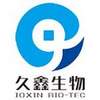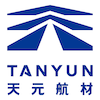4-(4-chloro-2-methylphenoxy)butanoic acid
1,4-Benzoquinone dioxime
CAS: 105-11-3
Molecular Formula: C6H6N2O2
4-(4-chloro-2-methylphenoxy)butanoic acid - Names and Identifiers
| Name | 1,4-Benzoquinone dioxime |
| Synonyms | QDO PQD Quinone dioxime p-Quinone dioxime 1,4-QUINONE DIOXIME 4-BENZOQUINONEDIOXIME 1,4-Benzochinondioxim p-Benzoquinone dioxime 1,4-Benzoquinone dioxime 1,4-BENZOQUINONE DIOXIME N-hydroxy-4-nitrosoaniline 1,4-CYCLOHEXADIENEDIONE DIOXIME 2,5-Cyclohexadiene-1,4-dione,dioxime 4-(4-chloro-2-methylphenoxy)butanoic acid (1E,4E)-N,N'-dihydroxycyclohexa-2,5-diene-1,4-diimine (1Z,4Z)-N,N'-dihydroxycyclohexa-2,5-diene-1,4-diimine |
| CAS | 105-11-3 |
| EINECS | 203-271-5 |
| InChI | InChI=1/C6H6N2O2/c9-7-5-1-2-6(8-10)4-3-5/h1-4,9-10H/b7-5-,8-6+ |
| InChIKey | LNHURPJLTHSVMU-CGXWXWIYSA-N |
4-(4-chloro-2-methylphenoxy)butanoic acid - Physico-chemical Properties
| Molecular Formula | C6H6N2O2 |
| Molar Mass | 138.12 |
| Density | 1,49 g/cm3 |
| Melting Point | 243°C (dec.)(lit.) |
| Boling Point | 253.51°C (rough estimate) |
| Flash Point | °C |
| Solubility | Soluble in acetic acid, ethyl acetate, soluble in hot water, insoluble in cold water, benzene and gasoline. |
| Vapor Presure | 0Pa at 25℃ |
| Appearance | Crystallization |
| Color | White |
| BRN | 2043234 |
| pKa | 9.12±0.20(Predicted) |
| Storage Condition | Sealed in dry,Room Temperature |
| Stability | Stable. Incompatible with strong acids, strong oxidizing agents. |
| Refractive Index | 1.5100 (estimate) |
| MDL | MFCD00063636 |
| Physical and Chemical Properties | Melting point 243°C water-soluble <0.01g/100 mL at 22.5°C |
| Use | Used as a reagent for the determination of nickel and rubber vulcanizing agent |
4-(4-chloro-2-methylphenoxy)butanoic acid - Risk and Safety
| Hazard Symbols | Xn - Harmful |
| Risk Codes | R22 - Harmful if swallowed R40 - Limited evidence of a carcinogenic effect |
| Safety Description | S45 - In case of accident or if you feel unwell, seek medical advice immediately (show the label whenever possible.) S36/37 - Wear suitable protective clothing and gloves. S60 - This material and its container must be disposed of as hazardous waste. |
| WGK Germany | 3 |
| RTECS | DK4900000 |
| TSCA | Yes |
| HS Code | 29280000 |
| Toxicity | LD50 oral in rat: 464mg/kg |
4-(4-chloro-2-methylphenoxy)butanoic acid - Introduction
Soluble in acetic acid, ethyl acetate, soluble in hot water, insoluble in cold water, benzene and gasoline. Flammable
Last Update:2022-10-16 17:11:42
4-(4-chloro-2-methylphenoxy)butanoic acid - Reference Information
| LogP | 0.3 at 35℃ |
| (IARC) carcinogen classification | 3 (Vol. 29, Sup 7, 71) 1999 |
| NIST chemical information | Information provided by: webbook.nist.gov (external link) |
| EPA chemical information | Information provided by: ofmpub.epa.gov (external link) |
| performance | 1,4-benzoquinone dioxime product performance: easy to disperse in the compound, fast vulcanization speed, high constant elongation strength of the compound, heat resistance and weather resistance, ozone resistance and excellent electrical insulation performance, can be used as acrylic polymerization inhibitor, can improve the thermal resistance of polyester fiber tire cord fabric, hot melt adhesive of metal glass, crosslinking regulator of olefin copolymer, organic monomer stabilizers, self-curing adhesives, rubber products that prevent nuclear radiation, have an activation effect on oxidants (such as Pb304,Pb02). |
| application | 1,4-benzoquinone dioxime is a heterocyclic compound that can be used as a crosslinking agent. |
| Preparation | In recent years, the industrial production of 1,4-benzoquinone dioxime is mainly: in the presence of a certain concentration of sulfuric acid at 0 ℃, sodium nitrite is dissolved in phenol 30% NaOH solution to prepare p-benzoquinone monooxime, and then the prepared p-benzoquinone monooxime is added to hydroxylamine oxime to prepare the final product 1,4-benzoquinone dioxime. |
| use | used as vulcanizing agent for butyl rubber, natural rubber, styrene butadiene rubber and polysulfur "ST" rubber, especially suitable for butyl rubber. Oxidants (such as Pb3O4,PbO2) have an activation effect on it. It is easy to disperse in the rubber compound, has fast vulcanization and high tensile strength of vulcanized rubber. The critical temperature is relatively low and has a tendency to scorch. Adding some anti-scorch agents (such as phthalic anhydride, anti-scorch agent NA), thiuram, thiazole, dithiocyanocarbate accelerator can effectively improve the safety of operation. This product has discoloration and contaminants and is only suitable for dark products. When the accelerator DM is used as the active agent, the scorch resistance is better than that of lead oxide, and the discoloration is also weakened, except for carbon black rubber. When tetrachlorobenzoquinone is used as the active agent, the activation is much stronger than lead oxide. This product is mainly used for manufacturing air bags, water tires, insulation layers for wires and cables, heat-resistant gaskets, etc. The dosage is 1-2 parts. 10-6 parts of lead oxide or DM4-2 parts of accelerator. p-phenylquinone dioxime is a reagent for the determination of nickel. Used as a reagent for the determination of nickel and rubber vulcanizing agent Used as a vulcanizing agent for butyl rubber, natural rubber, styrene-butadiene rubber, etc. |
| production method | p-nitroso phenol is generated from phenol nitrosation, translocation to pair quinone monooxime, and then react with hydroxylamine hydrochloride to obtain the product. Under stirring, slowly dissolve phenol in 30% sodium hydroxide solution, mix with sodium nitrite at 0 ℃, then add 30% sulfuric acid, keep the temperature at 7-8 ℃, and stir for 1h. Filter out the crystals and wash away the acidity with water to obtain p-nitroso phenol. After transposition, it is mixed with hydroxylamine hydrochloride aqueous solution, and heated to 70°C for oxime reaction. After the reaction is completed, the p-phenylquinone dioxime is filtered. Raw material consumption (kg/t) phenol 1500 hydroxylamine hydrochloride 1200 sodium nitrite (97%)1600 |
| toxic substance data | information provided by: pubchem.ncbi.nlm.nih.gov (external link) |
Last Update:2024-04-10 22:29:15

Supplier List
Featured ProductsSpot supply
Product Name: 1,4-Benzoquinone dioxime Request for quotationCAS: 105-11-3
Tel: 86-523-87558858,87612088
Email: 184089063@qq.com
yhj@joxbio.com
Mobile: 86-13615177555,15371578585,15370719785
QQ: 184089063
Wechat: sunmytxjs
Spot supply
Product Name: 1,4-Benzoquinone dioxime Request for quotationCAS: 105-11-3
Tel: +86-17551318830
Email: r@reformchem.com
Mobile: +86-17551318830
QQ: 3787852685
Spot supply
Product Name: 1,4-Benzoquinone dioxime Request for quotationCAS: 105-11-3
Tel: +86-17551318830
Email: r@reformchem.com
Mobile: +86-17551318830
QQ: 3785839865
Spot supply
Product Name: 1,4-Benzoquinone dioxime Request for quotationCAS: 105-11-3
Tel: 17505222756
Email: pules.cn@gmail.com
Mobile: +86-17551318830
Wechat: 17505222756
Multiple SpecificationsSpot supply
Product Name: 1,4-Benzoquinone dioxime Request for quotationCAS: 105-11-3
Tel: 15335994747
Email: 3521670276@qq.com
Mobile: 15335994747
QQ: 3521670276
Wechat: A2020071098
Product Name: 1,4-Benzoquinone dioxime Request for quotation
CAS: 105-11-3
Tel: 0086-551-65418684
Email: sales@tnjchem.com
info@tnjchem.com
Mobile: 0086 189 4982 3763
QQ: 2881500840
Wechat: 0086 189 4982 3763
WhatsApp: 0086 189 4982 3763
Product List: View Catalog
CAS: 105-11-3
Tel: 0086-551-65418684
Email: sales@tnjchem.com
info@tnjchem.com
Mobile: 0086 189 4982 3763
QQ: 2881500840
Wechat: 0086 189 4982 3763
WhatsApp: 0086 189 4982 3763
Product List: View Catalog
Spot supply
Product Name: 1,4-Benzoquinone dioxime Request for quotationCAS: 105-11-3
Tel: 86+027-83389957
Email: 1024042217@qq.com
Mobile: 86+18627766980
QQ: 1024042217
Wechat: 18627766980
Product Name: p-Benzoquinone dioxime Visit Supplier Webpage Request for quotation
CAS: 105-11-3
Tel: 18301782025
Email: 3008007409@qq.com
Mobile: 18021002903
QQ: 3008007409
Wechat: 18301782025
CAS: 105-11-3
Tel: 18301782025
Email: 3008007409@qq.com
Mobile: 18021002903
QQ: 3008007409
Wechat: 18301782025
Product Name: p-Benzoquinone dioxime Request for quotation
CAS: 105-11-3
Tel: +86-21-56795779
Email: charles7788@worldyachem.com
Mobile: +86-13651600618
QQ: 2850607228
Wechat: 13651600618
WhatsApp: +8613651600618
CAS: 105-11-3
Tel: +86-21-56795779
Email: charles7788@worldyachem.com
Mobile: +86-13651600618
QQ: 2850607228
Wechat: 13651600618
WhatsApp: +8613651600618
Spot supply
Product Name: p-Benzoquinone dioxime Request for quotationCAS: 105-11-3
Tel: 15013245021
Email: 542374214@qq.com
Mobile: 15013245021
Wechat: 15013245021
Featured ProductsSpot supply
Product Name: 1,4-Benzoquinone dioxime Request for quotationCAS: 105-11-3
Tel: 86-523-87558858,87612088
Email: 184089063@qq.com
yhj@joxbio.com
Mobile: 86-13615177555,15371578585,15370719785
QQ: 184089063
Wechat: sunmytxjs
Spot supply
Product Name: 1,4-Benzoquinone dioxime Request for quotationCAS: 105-11-3
Tel: +86-17551318830
Email: r@reformchem.com
Mobile: +86-17551318830
QQ: 3787852685
Spot supply
Product Name: 1,4-Benzoquinone dioxime Request for quotationCAS: 105-11-3
Tel: +86-17551318830
Email: r@reformchem.com
Mobile: +86-17551318830
QQ: 3785839865
Spot supply
Product Name: 1,4-Benzoquinone dioxime Request for quotationCAS: 105-11-3
Tel: 17505222756
Email: pules.cn@gmail.com
Mobile: +86-17551318830
Wechat: 17505222756
Multiple SpecificationsSpot supply
Product Name: 1,4-Benzoquinone dioxime Request for quotationCAS: 105-11-3
Tel: 15335994747
Email: 3521670276@qq.com
Mobile: 15335994747
QQ: 3521670276
Wechat: A2020071098
Product Name: 1,4-Benzoquinone dioxime Request for quotation
CAS: 105-11-3
Tel: 0086-551-65418684
Email: sales@tnjchem.com
info@tnjchem.com
Mobile: 0086 189 4982 3763
QQ: 2881500840
Wechat: 0086 189 4982 3763
WhatsApp: 0086 189 4982 3763
Product List: View Catalog
CAS: 105-11-3
Tel: 0086-551-65418684
Email: sales@tnjchem.com
info@tnjchem.com
Mobile: 0086 189 4982 3763
QQ: 2881500840
Wechat: 0086 189 4982 3763
WhatsApp: 0086 189 4982 3763
Product List: View Catalog
Spot supply
Product Name: 1,4-Benzoquinone dioxime Request for quotationCAS: 105-11-3
Tel: 86+027-83389957
Email: 1024042217@qq.com
Mobile: 86+18627766980
QQ: 1024042217
Wechat: 18627766980
Product Name: p-Benzoquinone dioxime Visit Supplier Webpage Request for quotation
CAS: 105-11-3
Tel: 18301782025
Email: 3008007409@qq.com
Mobile: 18021002903
QQ: 3008007409
Wechat: 18301782025
CAS: 105-11-3
Tel: 18301782025
Email: 3008007409@qq.com
Mobile: 18021002903
QQ: 3008007409
Wechat: 18301782025
Product Name: p-Benzoquinone dioxime Request for quotation
CAS: 105-11-3
Tel: +86-21-56795779
Email: charles7788@worldyachem.com
Mobile: +86-13651600618
QQ: 2850607228
Wechat: 13651600618
WhatsApp: +8613651600618
CAS: 105-11-3
Tel: +86-21-56795779
Email: charles7788@worldyachem.com
Mobile: +86-13651600618
QQ: 2850607228
Wechat: 13651600618
WhatsApp: +8613651600618
Spot supply
Product Name: p-Benzoquinone dioxime Request for quotationCAS: 105-11-3
Tel: 15013245021
Email: 542374214@qq.com
Mobile: 15013245021
Wechat: 15013245021
View History









